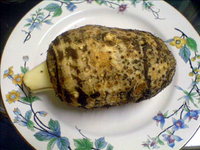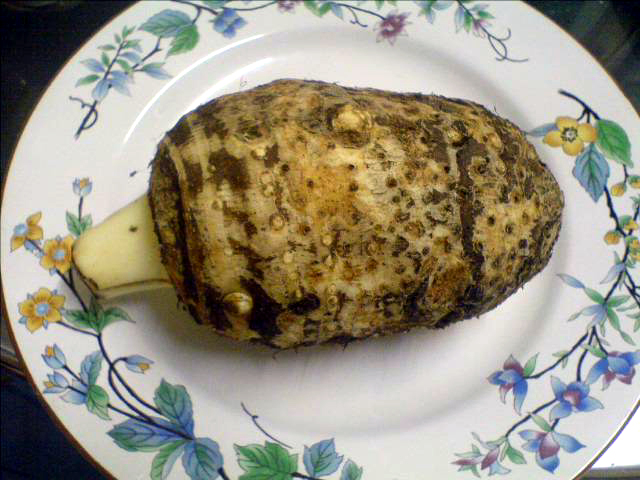корнеплод, похожий на сморчок
Уважаемые знатоки, извините, пожалуйста. Скажите мне, как зовут этот овощ? Куплен здесь, на Кипре. Английского названия на нем не написали, а греческое я забыла, пока дошла из магазина. Что-то на букву "к", и в самом слове еще пара букв "к". Сам он молчит, хоть пытай. А купить и попробовать было ужасно интересно. Попробовала. В сыром виде несъедобен, а чтобы узнать, как готовить, надо спросить гугль. А о чем его спросить?
Если что - это совсем не сельдерей. Вкус мучнистый, с трюфельной ноткой. Его собратья по лотку были еще более сморщенные, вытянутые и коричневые.



